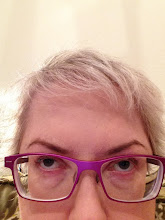In a letter to Cassandra Austen dated 18th December 1798, immediately after Jane Austen's 23rd birthday, she made passing reference to her birthday.
I am sincerely rejoiced however that I ever was born,
since it has been the means of procuring him (her nephew George) a dish of Tea.
I'd like to invite you all today to join me in a celebration of Jane Austen's birthday, but in my opinion a dish of Tea alone will not suffice. This great lady deserves a birthday cake, though such a thing was not common practice at the time. However, as she wrote in a letter in 1808,
You know how interesting the purchase
of a sponge-cake is to me.
The purchase of prepared food, especially cakes, would have been rare indeed for a family of women of limited means, and most baking would have been made at home.
The term "sponge" had only recently begun to be applied to a light-textured cake. As Maggie Lane in Jane Austen and Food tells us,
...she referred, of course, not to the Victoria sandwich we often call sponge but to the true fatless sponge-cake, made with just flour, eggs and sugar. Raising powder was not available before the 1850s, so the lightness of a sponge had to come from the amount of air that could be beaten into the mixture. Fortunately, labour was cheap and uncomplaining.
Jane Austen and Food, page 68
Since a good sponge-cake, according to Hannah Glasse in 1747, should be beaten for an hour, it's not hard to see why the purchase of such a cake, without the repetitive strain-inducing labour, should be such a pleasant prospect.
Here, then, is a recipe for a sponge-cake from Maria Eliza Rundell's 1806 book, A New System of Domestic Cookery.
Image courtesy of Feeding America
Spunge Cake
Weigh ten eggs, and their weight in very fine sugar, and that of six in flour; beat the yolks with the flour and the whites alone, to a very stiff froth; then by degrees mix the whites and the flour with the other ingredients, and beat them well half an hour. Bake in a quick oven an hour.
I don't think Jane Austen would be too impressed if I added 235 birthday candles, however. ;)












Oh dear! I do hope Miss Austen would not be terribly offended if I declined to make sunch a cake, and instead procured one from Messrs. Tesco instead?
ReplyDeleteLovely post Jane! Id be honoured to drink a dish of tea with you today.
ReplyDeleteJulie x
Thanks Nettie! I have to say I was put in mind while writing this post of that scene from The Calendar Girls where one of them says "And for really special occasions go to Marks & Spencers"! ;)
ReplyDeleteJulie, we will have that cup of tea one day, I am quite determined :)
I would like to lend my Kitchen Aid mixer to the Austen household to make a whipping quicker and easier on the arm! Lovely post thank you, made me smile! C x
ReplyDeleteJane, I enjoyed this post ever so much. A food person, I was very interested in the historic recipe. However, I make a good sponge cake in less time (with a little help from appliances the Austens did not have). Much as I romanticise the era, there are a few things about OUR time that I prefer even more than appliances, such as indoor plumbing and modern dentistry!
ReplyDeleteIn a letter to Cassandra Austen dated 18th December 1798, immediately after Jane Austen's 23rd birthday, she made passing reference to her birthday.dstv installations from PTA dstv
ReplyDeleteBirthday Cakes and Cupcakes delivered all over London. Click link to see London's biggest selection of over 800 party cakes.wedding cakes london
ReplyDelete